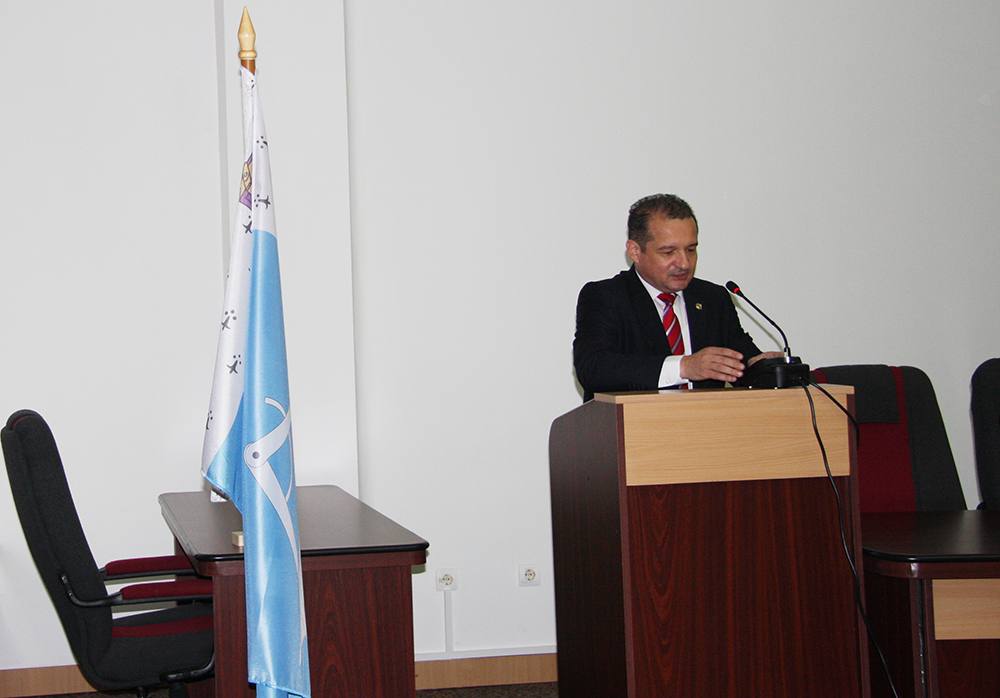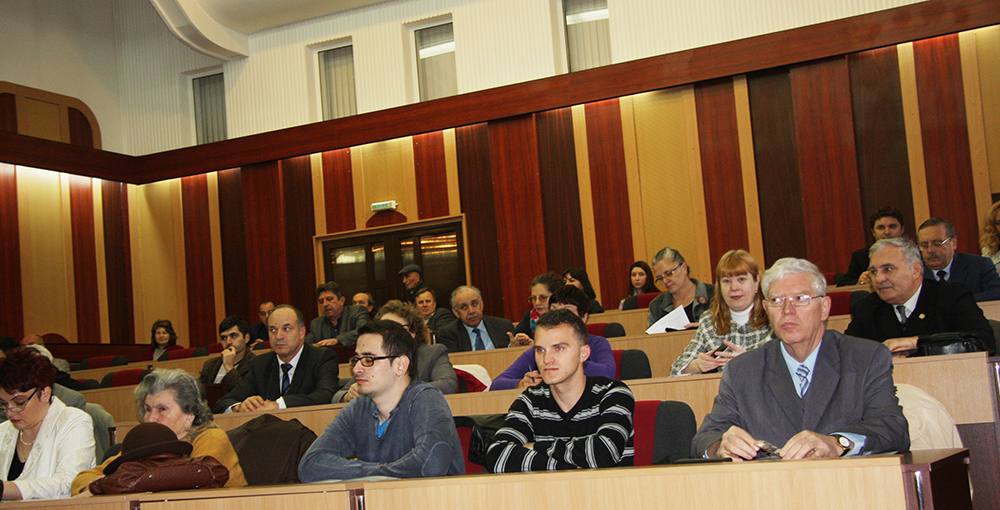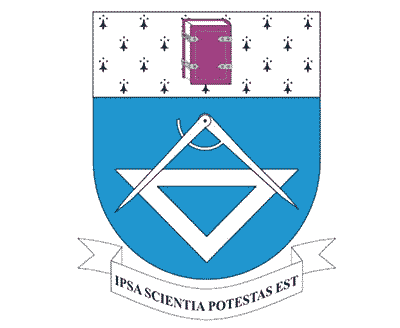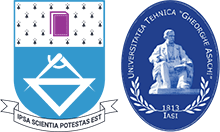The fifth edition of the Technical Education and Sciences History Symposium marked in 2013 the beginning of anniversary events dedicated to 200 years from the establishment of the School of Engineering and Land Registration by Gheorghe Asachi and 75 years from the opening of the Polytechnic School of Iasi (TUIASI 200).

The event took place on the 13th of November 2013, starting at 9.00, in the T Wing Conference Hall, and it hosted 19 scientific paper presentations that mainly approached the history of certain specialty fields of TUIASI faculties and departments. The vent was hosted by Ph.D. Prof. Mihai Dorin from the Humanities Department of TUIASI – the organizer of the event. Due to the anniversary context, several papers focused on the personality of the scholar Gheorghe Asachi and his role in establishing the foundations of technical higher education, as well as on the paintings in the “Gheorghe Asachi” Hall in A Wing. A professor from Italy was also present to the event, talking about the relationship between Gheorghe Asachi and the Italian scholarly environment.
The founder of schools that placed engineering next to music
The professor Gheorghe Nistor – the first speaker – highlighted the founding spirit and the encyclopaedic personality of Gheorghe Asachi, mentioning that “he placed engineering alongside music.” He explained that the establishment of the School of Land Registration was synchronized with the western trends of that time. He also underlined that Asachi elevated the national higher education prestige by developing an education system that enabled granting the first engineer bachelor degrees.
Ph.D. Prof. Mihai Dorin completed the presentation of a concentrated biography with a lecture invitation, reminding that “we are a link in the chain of history. Gheorghe Asachi had the job cut for him – the culturally charged engineering” and invited the present auditorium to reflect not only upon Gheorghe Asachi’s work, but also upon his conduct. He spoke about the western affinity of the founder who was also concerned about keeping the Romanian cultural autonomy and about the rediscovering its Latinity. “His pioneering work in Moldavia restored the ancient Romanian mythology. He fought against a culture of form without function and definitely restored the Romanian language.”
Ph.D. Lecturer Eng. Gabriel Asandului highlighted the fact that Gheorghe Asachi – “one of the late illuminists of Europe” – sought to spread the Romanian education at all levels, being responsible for fostering the scientific spirit. He also underlined the role of the Michaelian Academy that represented a superior level than the School of Land Registration, as it was a scientific centre, a research and science dissemination institution in Moldavia and in the Romanian Principalities.
The host that made the University work

The central point of the symposium was the presentation held by Ph.D. Prof. Eng. Neculai Seghedin, Vice-Rector of Didactics at TUIASI, who spoke about “The Paintings in the Hall”, describing the restoration of “Gheorghe Asachi” Hall of Iasi. He presented a series of old documents, photographs, postal cards, reports that testified about the efforts to recondition the Hall partially destroyed during the war. The professor confessed that these documents were “a revelation that proves that in the Polytechnic School and in the Institute there have been people driven to recuperate the history and that there is an army of people that are making the institution work.”
He explained that Petru Poni was `the one that elaborated the first designs of the University (The University Palace of Copou), inaugurated in 1887 in the presence of King Carol the First of Romania and Queen Elisabeth of Romania. It is the reason why their paintings, which vanished in 1947, were placed in the Hall,. After the war, they were replaced by the paintings of Petru Poni and Gheorghe Asachi, works of Nicolae Popa. At that time, the Hall was used as a cinematograph and as headquarters of the Association for Befriending the Soviet Union. The professor highlighted the importance of preserving “the physical and spiritual patrimony of the institution”, stating that the unveiling of the painting on the 15th of November represents such a memory recovering act.
Surpassing the dreams of the forbearers
The Symposium subjects shifted towards aspects of current history and there were described the history of certain disciplines, specializations and departments. Last but not least, the achievements of the professors and departments from the Technical University were also presented. The papers approached subjects ranging from the early telecommunications, “the right to architecture”, and the first computers to the new study programs of the faculties and unconventional technologies. As Ph.D. Lecturer Eng. Daniela Suteu mentioned, “this symposium honours, motivates, compels. To speak about the history of the technical education also means to speak about what we are today due to those that worked for 200 years in the education system of Iasi. It is our duty to surpass the dream of those establishing the school of engineering and to be proud of it. ” She pointed out that the present mission of TUIASI is “to transform the dream into something material”, explaining that the ultimate goal is to process the high school graduate into the nowadays engineer, a complete intellectual with interdisciplinary training.
The professor Alecsandru Simion underlined the importance of an event that approaches the history of technical sciences and education, because it enables one “to travel back in time, to immerse in the preoccupations of that ages. This fact stirs emotions able to temperate exaggerated trends.” He added regarding TUIASI 200 that “the eulogy is important for our university. Through it, other institutions learn that you exist. A glorious past is for naught if it is not acknowledged.”

Ph.D. Lecturer Horia Chiriac expressed a reserved optimism concerning the evolution of the scientific spirit in the European cultural environment. He rhetorically asked whether “the engineers couldn’t have done more to reach cheaper forms of alternative energies.” He cited an American study stating that the climatic evolutions do not comply with a natural pattern, and he issued the hypothesis that humankind is critically behind and it does not have yet the knowledge to practically solve serious problems. He debated with Ph.D. Prof. Eng. Mihail Voicu, member of the Technical Sciences Academy, who mentioned that “it is speculative to elaborate climatic forecasts for the next 100, 200 years. After all, it must be exactly determined how much pollution does the nature produce, and how much the humankind. ”
Lenuta Chirita from the Science and Technical Museum in Iasi spoke about Mihail Konteschweller, professor at the Polytechnic Institute of Iasi, pioneer of telemechanics, and specialist in radio communications. He initiated and spread the radio broadcasting in Romania. She told the audience how he took birds eye photos from a kite and how he studied medicine in Paris. He specialised working at Marconi Wireless Telegraph and he was a radio operator in the war, in England. Among his inventions, one should mention a noise removal device, the alternative powering of the radio receivers, an invention patent for an automobile aerodynamic body and a remote control sailing boat. At present, a competition bearing his name is organized in Iasi by the Faculty of Electronic, Telecommunications and Information Technology.
During the six hours of the symposium, the assistant professor Ph.D. Cristian Andriesei presented the early days of telecommunication in Romania, the senior lecturer Ph.D. Mihai Driscu underlined “the tight connection between the humanities and exact sciences that makes the profession of the architect possible. ” Ph.D. Prof. Eng. Corneliu Lazar presented important moments in the evolution of education in Automated Control and Computer Sciences by remembering the professors who had established this study discipline, while Ph.D. Lecturer Eng. Iulian Ionita presented a brief history of the Faculty of Materials Science and Engineering. During the event, personalities such as Dragomir Hurmuzescu, Ștefan Procopiu, Cezar Parteni Antoni, Anton Șesan or Radu Cernătescu were evoked. They all had an important contribution to the development of the technical education.
The symposium has already become a tradition of TUIASI, as the institution’s management desires that in the following year the symposium should reach national level. The event was organized in partnership with the Science and Technical Museum of Iasi, The Academy of Romania, the Iasi branch, The Romanian Technical Sciences Academy, the Iasi branch, and the Scientists Academy of Romania, the Iasi branch.



